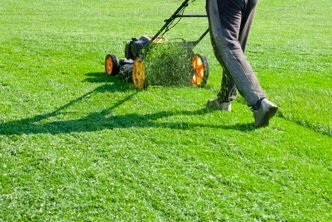Taking on a plumbing project at home can seem daunting and overwhelming; you don’t want to mess something up and create an even bigger problem. Doing it yourself, or DIY plumbing, is definitely possible for some projects but it’s not always the best answer.
To help you decide if DIY is right for your situation, we’re discussing the pros and cons of tackling the job yourself versus hiring a professional plumber. Read on to explore everything from safety concerns to cost savings so that you make an informed decision when taking on your next project!
If you’re a bit hesitant about trying to fix your plumbing on your own, then it’s best to hire a professional company like PlumbTech.
Table of Contents
Pros and cons of DIY plumbing
Doing a DIY project for your plumbing can be a daunting and risky venture. When it comes to plumbing, there are a few pros and cons to consider before you begin. On the plus side, doing your own plumbing may save you time and money; however, it does come with risks that could lead to larger problems if not done correctly.
If you’re not confident in your abilities, working with an experienced professional can ensure the job is done correctly and in a safe and timely manner. An experienced plumber will also have access to quality materials, tools, and parts needed to get the job done well the first time around.
Pros
- Cost savings
- Satisfaction of doing the job yourself
- A larger breadth of experience and knowledge for the future
Cons
- May not be done correctly which could lead to larger issues
- Risk of injury from improper handling
Ultimately, if you feel comfortable tackling plumbing projects yourself then by all means do so; just remember to be mindful of the potential risks involved.
Types of projects appropriate for DIY plumbing
Some projects are okay to handle on your own and if you have some experience, you may be able to get by on some more complex projects. However when in doubt, call a plumber. Here are some projects you can consider trying yourself:
Fixing a leaky faucet or pipe
One of the most common plumbing projects that people attempt to do themselves is fixing a leaky faucet. While this can be a relatively easy project, it is important to make sure that you know what you are doing before you begin.
If not done correctly, a leaky faucet can actually become worse.
Unclogging a toilet
This is another one of the most common DIY plumbing projects. Just be sure that you have the right size plunger as without it the situation may become worse.
Unclogging a sink or drain
Another common DIY plumbing project is unclogging a sink or drain. Clogs are typically the result of hair, food, oil and other materials that collect in your pipes. You can use a plunger to try and dislodge the blockage, but if that doesn’t work you might need a chemical drain cleaner to clear it.
Replacing a toilet flapper (to fix a running toilet)
Another common DIY plumbing project is replacing a toilet flapper. The flapper is a rubber seal that is located at the bottom of your toilet tank and prevents water from leaking. After a while, these seals can wear out and need to be replaced.
This is generally a fairly easy project that most people can do themselves.
Installing a new faucet, showerhead or other fixture
If you are looking to install a new fixture, this is generally something that can be done on your own but might be a lot trickier. While it is possible to do this yourself, it is generally not worth the risk as it can be very difficult to do and even small mistakes can lead to big problems.
Recommended tools for DIY plumbing jobs
A good set of plumbing tools is essential for any DIY plumbing job. Some of the most important tools for home plumbing include:
- Pipe wrench
This is a tool that is typically used for gripping and turning pipes. It is important to have a good pipe wrench that is the right size for the job, as using one that is too small can damage the pipes.
- Toilet plunger
A plunger is a tool that is used to unblock toilets. They come in different sizes so It is important to have a plunger that is the right size for the job, as using one that is too small can be ineffective and using one that is too large can damage the pipes.
- Drain snake
This is also used to clear blockages in drains. Drain snakes are long, flexible pieces of metal with a spiral shape that can be inserted into drains. Once the drain snake is in the drain, you turn it in a clockwise direction, which helps to loosen and break up any blockages.
Conclusion – Pros and cons of DIY plumbing
In conclusion, if you’re particularly skilled, DIY plumbing can be a relatively straightforward and cost-effective way to solve your home’s plumbing issues. However, it’s good to keep in mind the risks that come with taking on a project like this.
If something does go wrong, it may cost you dearly in repairs or leave you with an even bigger problem. If the job looks too big for you or something goes wrong along the way, don’t hesitate – call a professional right away!
Plumbers are highly trained and equipped to deal with these situations and will help get your pipes back in order faster than you could on your own. Take a breath and evaluate the situation – there’s no shame in calling in an expert.





